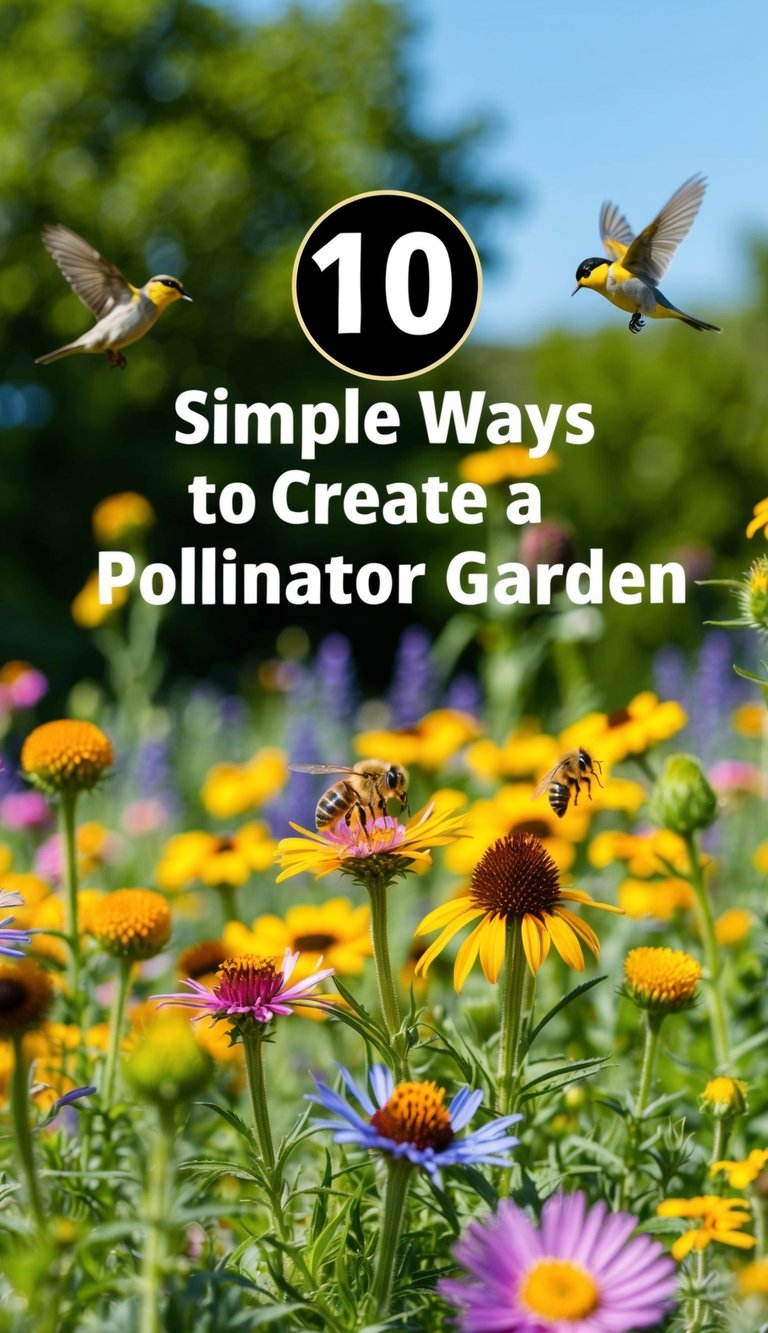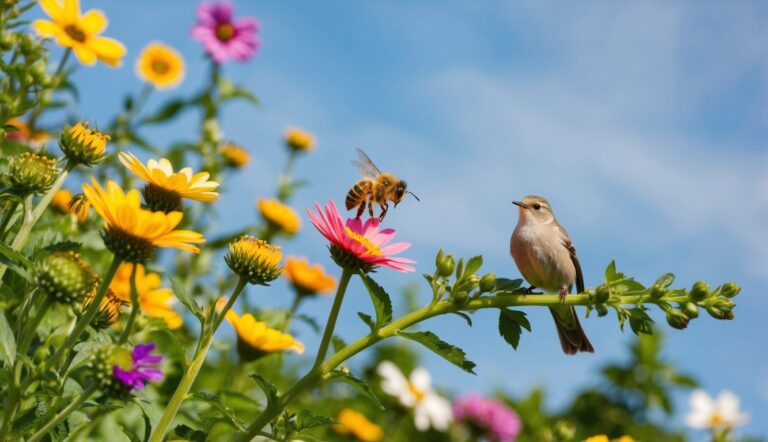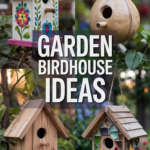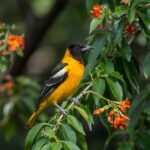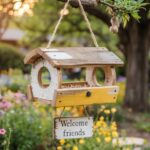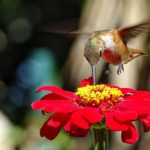Ever wondered how your garden could become a buzzing paradise for birds and bees? Creating a wildlife-friendly outdoor space isn’t just good for nature—it’s rewarding for you too!
In the following sections, we’ll share simple ideas to make your garden more attractive to our backyard birds and busy bees.
You’ll discover how small changes can make a big difference, bringing more color, movement, and life to your outdoor space while helping crucial pollinators thrive.
1) Choose Native Plants for Local Wildlife.
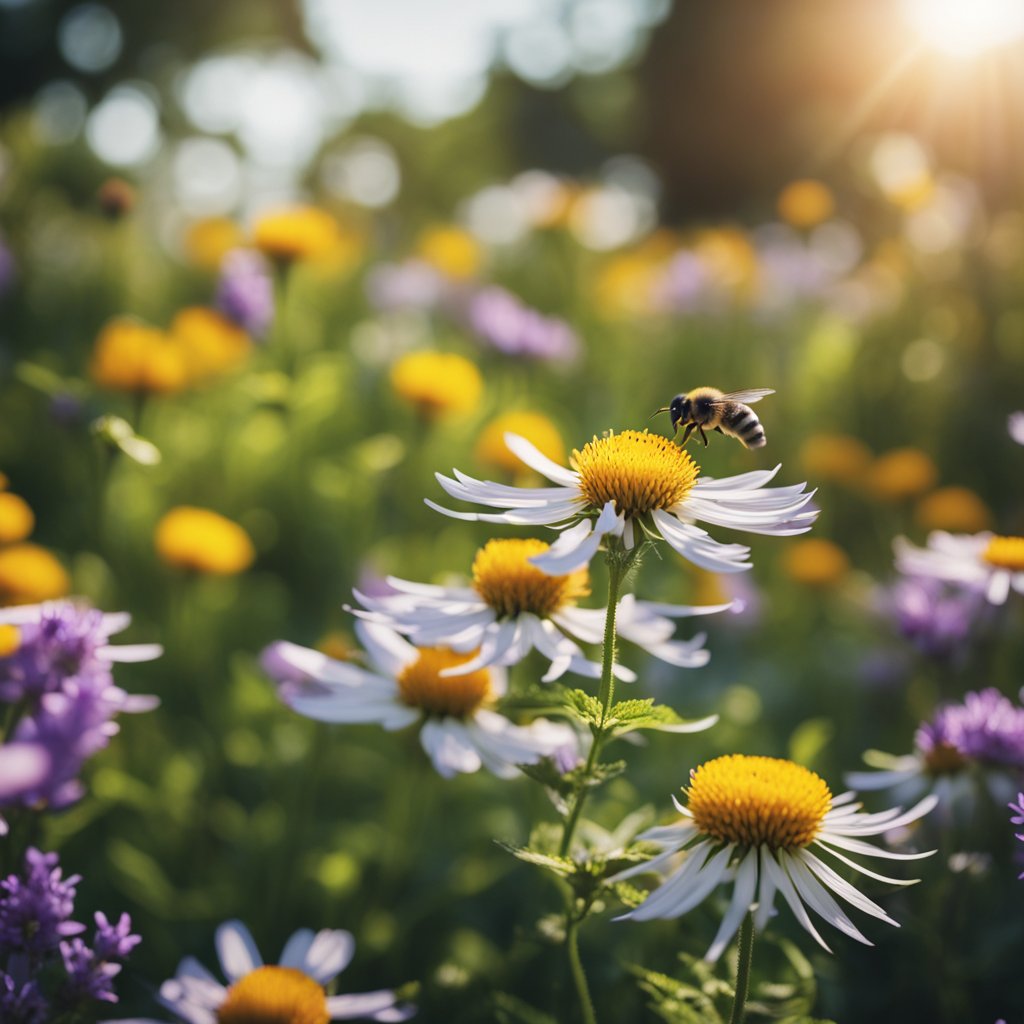
Native plants are the best choice for your garden if you want to attract birds and bees. These plants have evolved alongside local wildlife over thousands of years, creating perfect natural relationships.
When you select plants that naturally grow in your region, you’re creating a familiar habitat for local birds, bees, and butterflies. They recognize these plants as food sources and safe places to nest.
Native plants are also easier to maintain. They’ve adapted to your local climate and soil conditions, so they need less water, fertilizer, and care than exotic plants.
- Milkweed is essential for monarch butterflies
- Coneflowers attract both birds and bees
- Dogwood trees provide berries for birds
Check the Xerces Society or Pollinator.org for native plant lists specific to your region.
Why We Love It: Native plants create a thriving ecosystem in your yard while reducing maintenance work and water usage.
2) Incorporate a Variety of Berry-Producing Shrubs
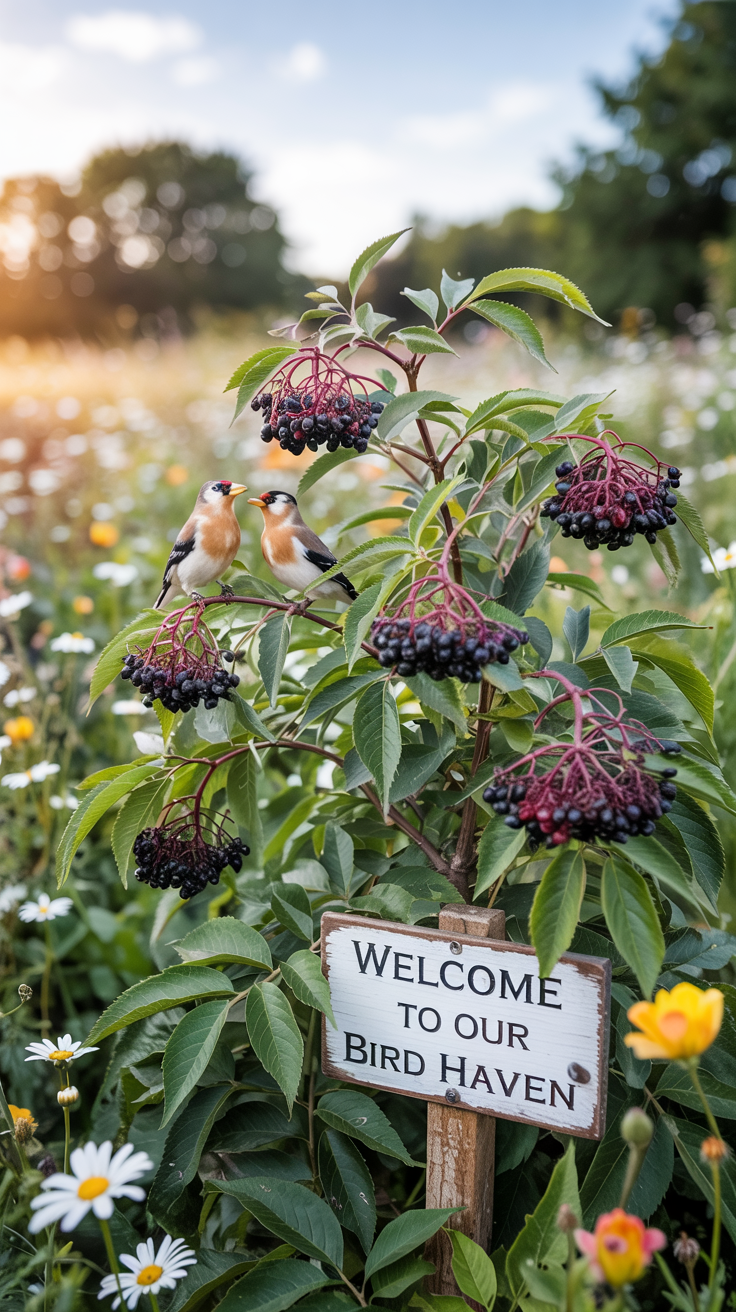
Want to turn your garden into a bird paradise? Berry-producing shrubs are the way to go! These plants offer food and shelter to the birds throughout the year.
Native shrubs like winterberry, chokeberries, and hawthorn are especially valuable as they provide berries that persist well into winter when food is scarce. Your local birds will thank you!
You can create a beautiful display by mixing shrubs that produce berries at different times. This ensures your garden remains attractive to wildlife year-round.
- Blueberry shrubs add attractive layering to your yard
- Chokeberries offer late-season food sources
- Hawthorn provides protective nesting areas and winter berries
Try planting berry bushes alongside culinary herbs like thyme and lemon balm for a garden that serves both you and wildlife.
Why We Love It: Berry shrubs provide essential food for birds through changing seasons while adding beautiful color and structure to your garden!
3) Plant in Layers for Habitat Diversity
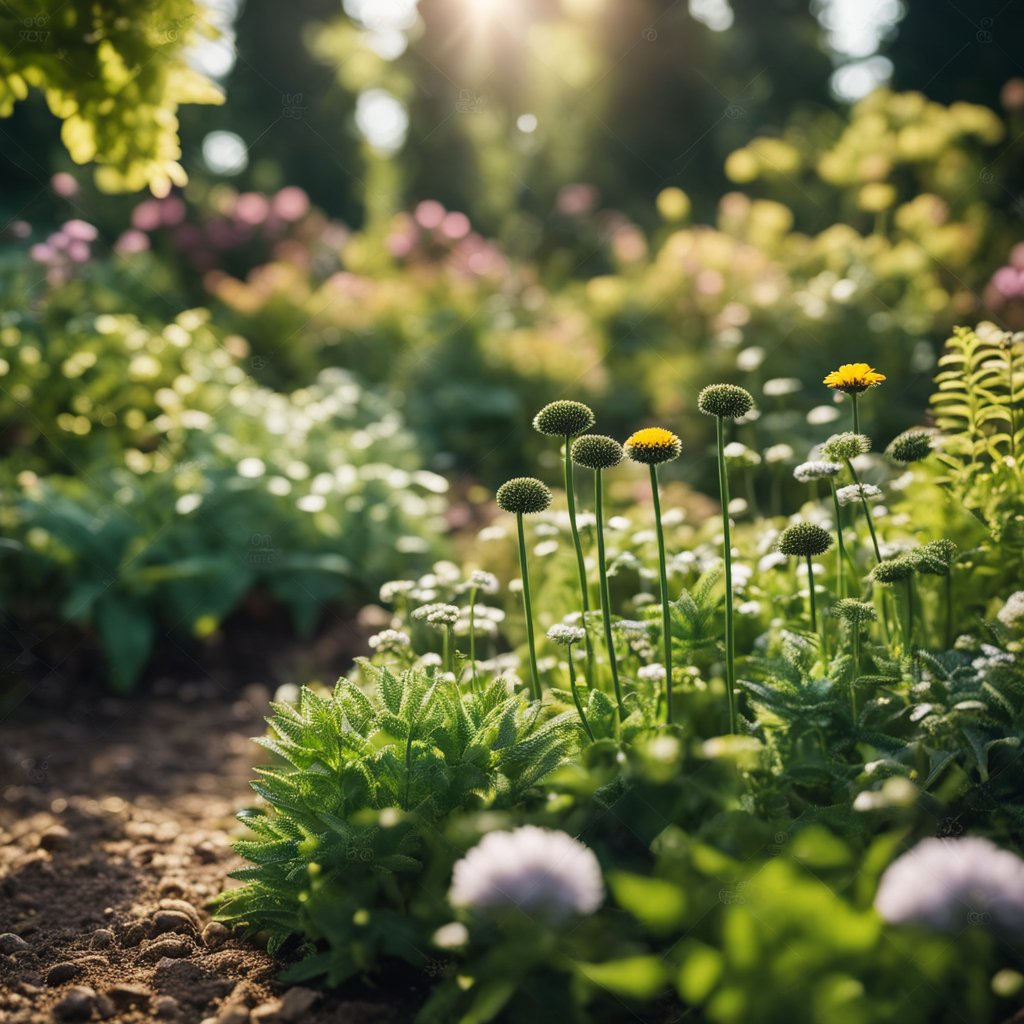
Creating a garden with different layers mimics natural ecosystems and provides homes for many birds and bees. Think of your garden as having multiple floors, from ground level up to the treetops.
Start with a canopy layer using trees like oaks or fruit trees that provide food and shelter for birds. These also serve as perching spots for birds to scout the area.
Below that, add a shrub layer with plants like elderberry or blueberry bushes. These mid-height plants create nesting spaces and offer berries for birds.
Don’t forget the herbaceous layer with flowers like coneflowers, asters, and salvias. These attract bees and provide seeds for birds.
Finally, include a ground layer with low-growing plants like clover or creeping thyme. These offer food for ground-feeding birds and nesting materials.
Why We Love It: This approach creates a mini-ecosystem in your yard that supports wildlife year-round and looks naturally beautiful rather than rigidly planned.
4) Avoid pesticides to protect pollinators

Want to make your garden a paradise for bees and birds? Skip the pesticides! These chemicals harm the very creatures that help your garden thrive.
Many common garden pesticides are toxic to bees, butterflies, and other helpful insects. Neonicotinoids are especially dangerous as they can stay in plant tissues and affect pollinators even weeks after application.
Instead of reaching for chemicals, try these safer alternatives:
- Plant pest-resistant varieties in your garden
- Introduce beneficial insects like ladybugs and lacewings
- Use physical barriers such as row covers to protect plants
- Try homemade sprays with mild soap and water for minor pest issues
Remember to check product labels carefully. Even products labeled “organic” can harm pollinators if used incorrectly.
If you must use pesticides, apply them in the evening when bees are less active, and never spray open blooms.
Why We Love It: You’ll create a healthier ecosystem that supports wildlife while growing stronger plants naturally without harmful chemicals.
5) Add a Birdbath for Essential Hydration

Want to turn your garden into a buzzing hub of activity? A birdbath is the perfect addition! Both birds and bees need water to survive, and a simple bath provides this crucial resource.
Choose a container that’s shallow enough for safety. Birds prefer depths of 1-2 inches, while bees need even less. A traditional birdbath works great, but you can also repurpose a shallow bowl or plate.
Add a few rocks, twigs, or acorns to create landing spots for your visitors. These give bees and smaller insects safe places to perch while they drink without the risk of drowning.
Consider adding a dripper or mister to your bath! The gentle movement of water attracts more birds and prevents mosquitoes from breeding.
Place your birdbath in a spot that’s visible from your home so you can enjoy watching your visitors. Make sure it’s near plants but away from bird feeders.
6) Use Ornamental Grasses for Shelter
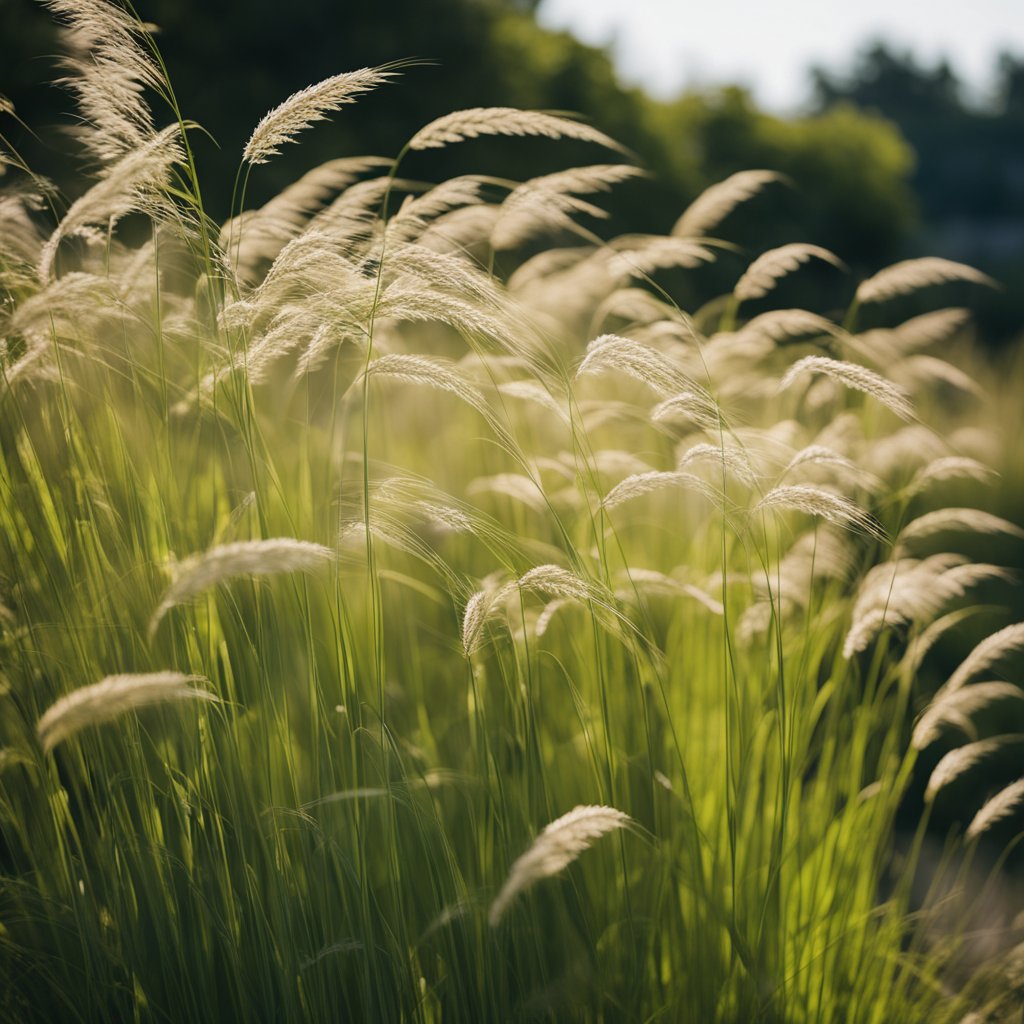
Ornamental grasses are perfect for creating cozy hideaways for birds and beneficial insects in your garden. These versatile plants provide natural shelter where birds can nest and hide from predators.
Taller varieties like switchgrass and bluestem create excellent privacy screens that double as bird habitats. Shorter grasses work well as ground cover, offering protection for smaller creatures.
Many ornamental grasses also produce seeds that feed finches, sparrows, and other small birds. This makes them a two-in-one solution for your wildlife garden!
Here’s how to use grasses effectively:
- Plant taller varieties along borders or as a backdrop
- Use medium-height grasses in clusters throughout your garden
- Let grasses stand through winter to provide year-round shelter
Try mixing different textures and heights for visual interest while creating more diverse habitats.
Why We Love It: Ornamental grasses add beautiful movement and sound to your garden while requiring minimal maintenance and providing essential wildlife shelter.
7) Include Flowering Herbs like Rosemary
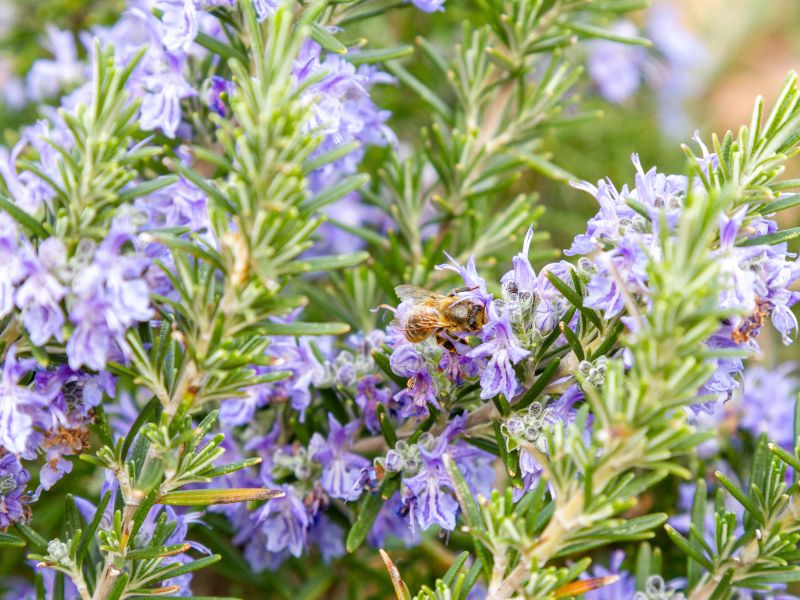
Flowering herbs do double duty in your garden – they’re useful in cooking and attract pollinators too! Herbs like rosemary, sage, thyme, and oregano produce beautiful blooms that bees and birds love.
Rosemary is a standout choice with its purple-blue flowers that appear in spring and summer. This hardy herb thrives in sunny spots and doesn’t need much water once established.
Other great options include:
- Basil – let some plants flower for the bees
- Thyme – produces tiny but abundant flowers
- Sage – has lovely purple blooms
- Oregano – creates clusters of small flowers bees adore
- Borage – features striking blue star-shaped flowers
You don’t need to let all your herbs flower at once. Try allowing a few stems to bloom while harvesting others for cooking.
Why We Love It: Flowering herbs save garden space, enhance your cooking, and help pollinators thrive – all while looking beautiful and smelling amazing!
8) Select Coneflowers for Seeds and Nectar
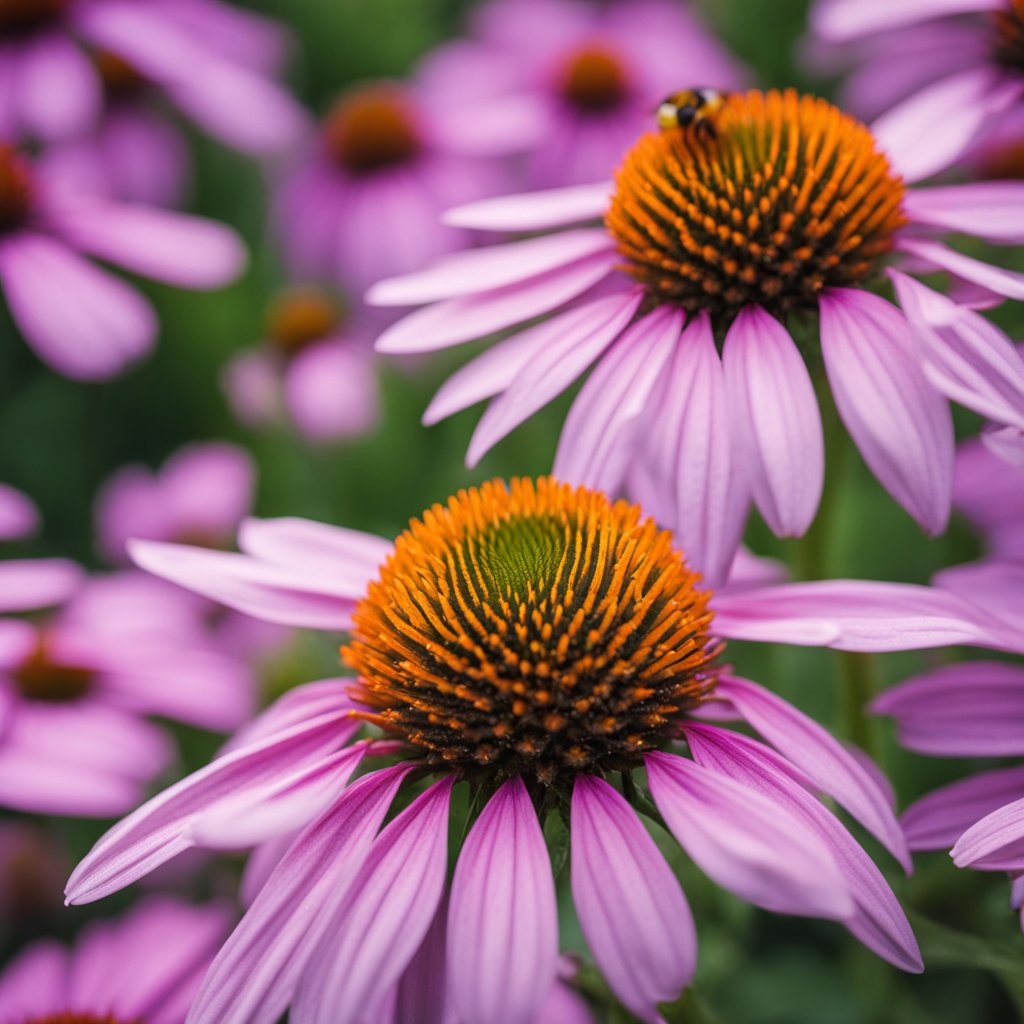
Want to create a buffet for birds and bees in your garden? Coneflowers (Echinacea) are your perfect plant partners! These colorful perennials pull double-duty in your wildlife-friendly landscape.
Birds love coneflowers for their seed-packed centers. Goldfinches and chickadees will perch on the sturdy stems to feast on the seeds in fall and winter. No bird feeder needed!
Bees, butterflies, and other pollinators flock to coneflowers for their abundant nectar. The simple, sunflower-like blooms make it easy for pollinators to access their sweet reward.
Varieties like ‘Fragrant Angel’ attract even more pollinators than the straight species. Other great options include purple coneflower (the classic!), and cultivars in pink, yellow, or white.
Plant coneflowers in sunny spots where you can watch the wildlife show. They’re drought-tolerant once established and return year after year.
Why We Love It: Coneflowers combine beauty, durability, and wildlife value in one plant that looks gorgeous in any garden style.
9) Leave Some Bare Soil for Ground-nesting Bees
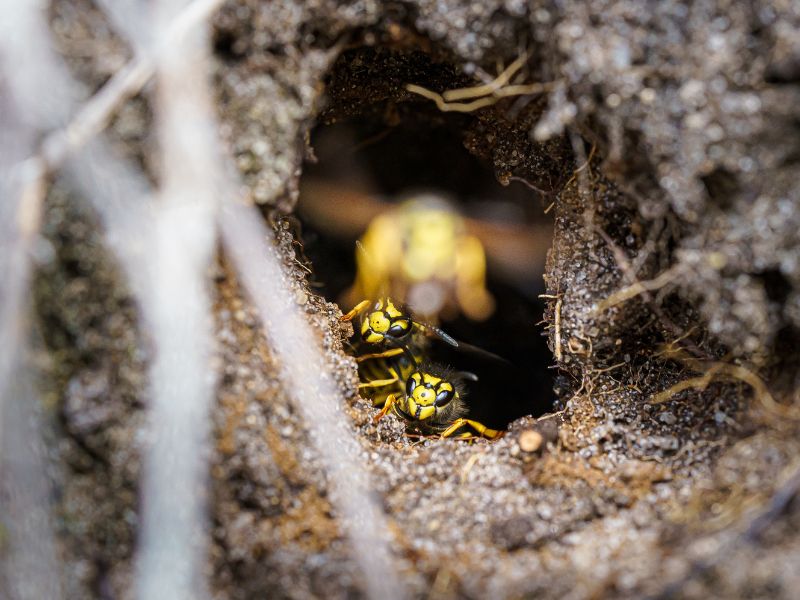
Did you know that many bee species actually live underground? Unlike honeybees, ground-nesting bees (like sweat bees) need patches of bare soil to dig their nests.
Creating a home for these important pollinators is super easy – just leave some areas of your garden unmulched! These bees prefer sunny spots with well-draining soil where they can tunnel down.
You don’t need a huge area – even small patches of bare dirt under shrubs or between garden beds will work. These busy little bees will thank you by pollinating your flowers and vegetables!
- Find a sunny spot in your garden
- Remove mulch or ground cover from a small area
- Avoid tilling or disturbing the soil once bees move in
Why We Love It: Ground-nesting bees are gentle, rarely sting, and are amazing pollinators that help your garden thrive without any maintenance from you!
10) Install a Suet Feeder for Extra Bird Nutrition
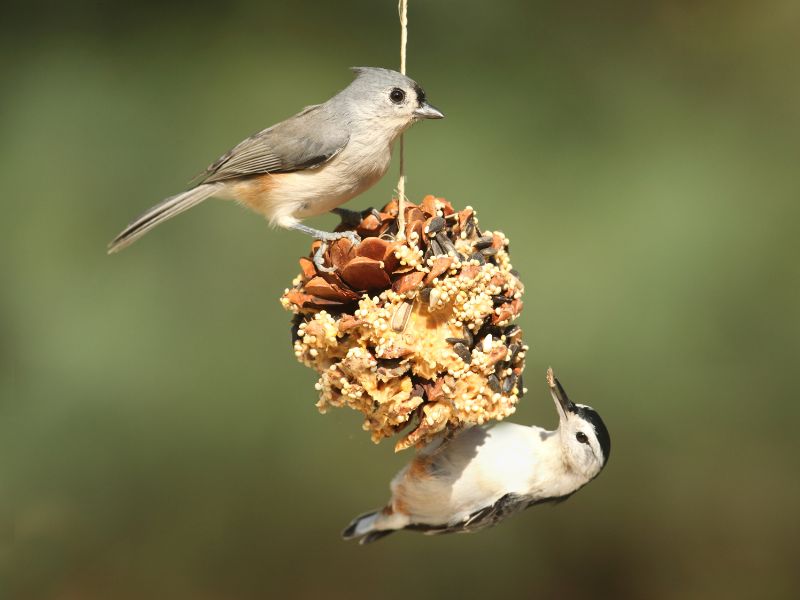
Want to attract woodpeckers, chickadees, and nuthatches to your garden? A suet feeder is your secret weapon! Suet is a high-energy food made from fat that gives birds the protein and calories they need, especially during colder months.
You can buy ready-made suet cakes or make your own at home. DIY suet is simple and fun!
- Melt lard or suet in a pan
- Mix in bird-friendly ingredients like cornmeal, oatmeal, and seeds
- Pour the mixture into molds and let it harden
- Place in a mesh or cage-style feeder
Hang your suet feeder near tree trunks or posts where woodpeckers feel comfortable. Keep it away from direct sunlight to prevent melting.
Clean your feeder regularly to prevent mold and bacteria growth that could harm your the birds.
Why We Love It: Suet attracts bug-eating birds that help control garden pests naturally while giving birds essential nutrients they can’t get from seeds alone.
Understanding Bird and Bee Needs
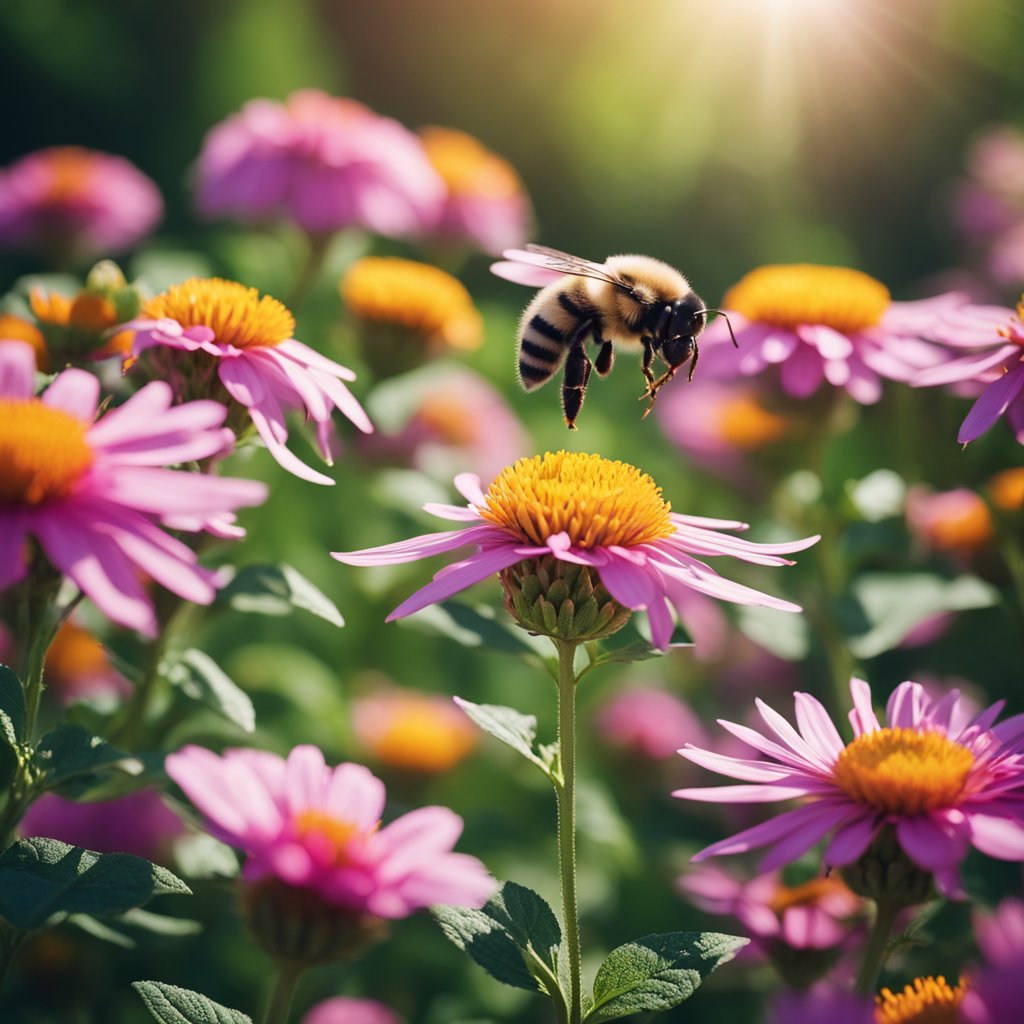
Birds and bees have specific needs in your garden to thrive. They need food sources, shelter, and safe spaces free from chemicals that might harm them.
The Role of Native Plants
Native plants are the secret sauce for a thriving bird and bee garden! These plants evolved alongside local wildlife, making them perfect food sources.
Bees absolutely love native wildflowers, flowering herbs, and berry plants. When you choose native plants, you’re essentially setting a perfect dinner table for your local pollinators.
Birds benefit too! Native plants produce seeds, fruits, and attract insects that birds feed on. Think of plants like coneflowers, black-eyed Susans, and sunflowers as bird buffets.
Why go native?
- Requires less water and maintenance
- Naturally resistant to local pests
- Provides food at the right times of year
- Creates familiar habitat for local wildlife
Remember that different bee species prefer different flower shapes and colors. Try to include a variety to attract more types of pollinators.
Creating Safe Habitats
Your garden can be a wildlife sanctuary with just a few thoughtful touches! Start by leaving a small pile of leaves in a corner – this simple act creates refuge for beneficial insects that birds love to eat.
Safe habitat ideas:
- Leave bare patches of soil for ground-nesting bees
- Install a bird bath for drinking and bathing
- Add bird houses at various heights
- Create “messy corners” with branch piles for shelter
- Avoid using pesticides and chemical fertilizers
Did you know a single chickadee needs up to 9,000 caterpillars to raise one brood of babies? That’s why chemical-free gardens are so important!
Water is essential too. A shallow dish with rocks gives bees safe drinking spots where they won’t drown. Birds appreciate moving water, so consider a small fountain if possible.
Garden Design for Harmony
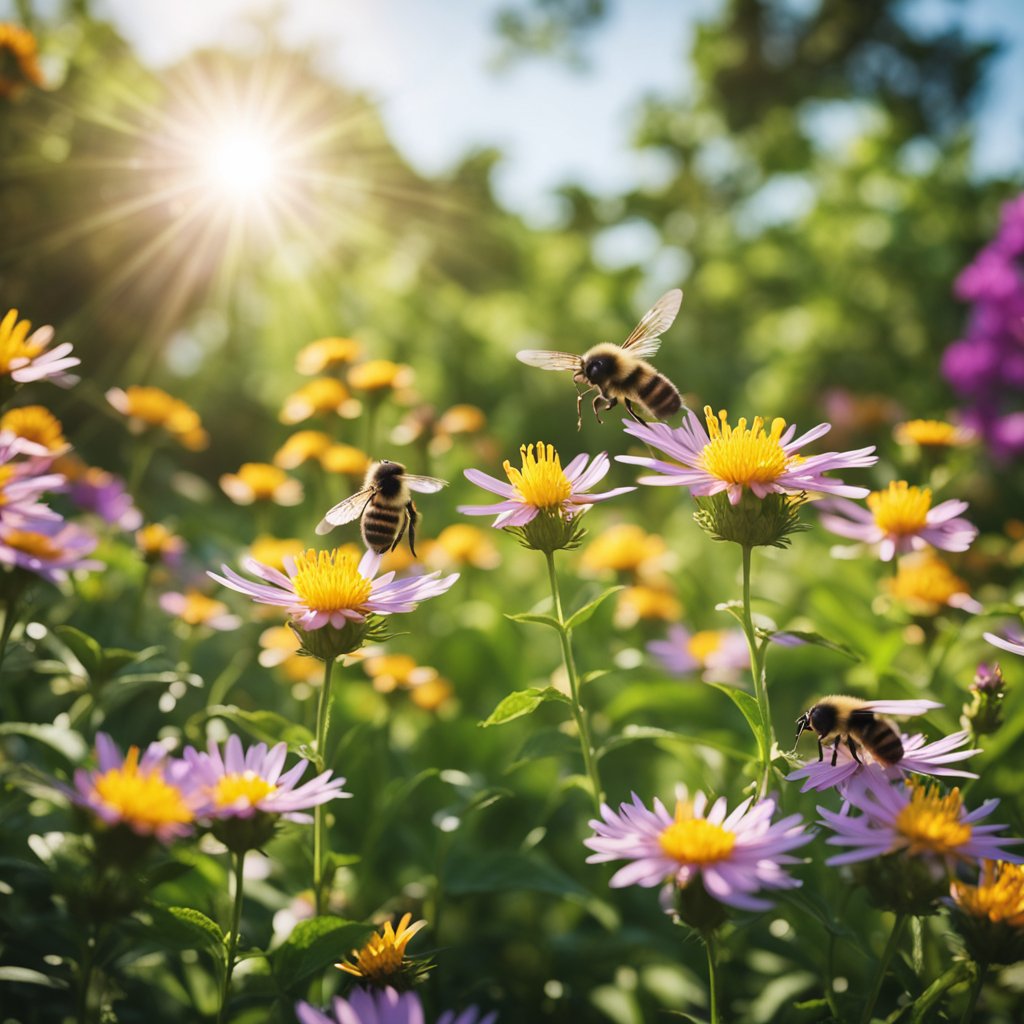
Creating a garden that welcomes birds and bees requires thoughtful design choices. The right layout combines beauty with functionality, offering creatures places to drink, rest, and thrive.
Incorporating Water Features
Want to make your garden irresistible to wildlife? Add water! Even a simple birdbath can transform your space into a bustling nature hub.
Birds need water for drinking and bathing. Place birdbaths at different heights – some on the ground for butterflies and bees, others elevated for birds. Keep water fresh by changing it every few days.
Consider adding a small fountain or pond if you have space. The gentle sound of moving water attracts more birds than still water. Plus, it prevents mosquitoes from breeding!
During hot summer days, your water features become vital hydration stations. Add a few flat rocks around the edges where butterflies can perch and sip safely.
Utilizing Vertical Spaces
Don’t just think flat – think up! Vertical gardening creates more habitat in the same footprint.
Try these vertical ideas:
- Trellises with climbing plants like honeysuckle or trumpet vine
- Hanging baskets filled with trailing flowers like lobelia or verbena
- Wall gardens with pockets for small flowering plants
- Bird houses at different heights for various species
Vertical elements provide nesting spots, protection from predators, and prime perching locations. Birds love tall structures for keeping watch while feeding.
Plant flowering vines that bloom at different times to provide year-round nectar. Salvias (as mentioned in search results) work wonderfully scattered throughout gardens due to their bright colors and nectar-rich blooms.
Remember to include some dense shrubs at varying heights. These create natural ladders for birds to move safely through your garden ecosystem.
Frequently Asked Questions
Creating a bird and bee-friendly garden raises many common questions about plant selection, design, and maintenance. Here are answers to help you transform your outdoor space into a thriving habitat for pollinators.
What are some effective plants to include in a pollinator garden that benefit both bees and birds?
Native plants are your best bet for attracting local wildlife. They’ve evolved alongside your regional pollinators and provide exactly what they need.
For bees, include flowering plants like coneflowers, bee balm, and lavender. Bees love these nectar-rich options and will visit them frequently during blooming seasons.
Birds benefit most from berry-producing shrubs like elderberry, serviceberry, and viburnum. These provide both food and shelter, giving birds places to nest and feast.
Sunflowers serve double duty – bees collect pollen from their centers while birds enjoy their seeds later in the season. Talk about efficient gardening!
Could you give tips on designing a bird- and bee-friendly garden in small urban spaces?
Even small spaces can become pollinator paradises! Container gardening is your friend in urban settings. Pick deep pots for plants with longer root systems.
Try vertical gardening with trellises or wall planters to maximize your limited space. Climbing plants like trumpet vine attract hummingbirds while taking up minimal ground space.
Window boxes can hold bee-friendly herbs like oregano and thyme. These smell amazing to you and provide food for pollinators right outside your window!
Don’t forget a small water source. A shallow dish with pebbles gives bees a safe drinking spot, while a compact birdbath invites smaller birds to visit.
What are the best practices for creating a bird- and bee-friendly garden environment in regional climates like Texas or California?
In hot Texas climates, choose drought-tolerant natives like salvias, lantana, and Texas sage. These plants thrive with less water while providing excellent nectar sources.
For California gardens, consider plants like manzanita, California lilac, and poppies. These natives are adapted to Mediterranean climate patterns and local wildlife loves them.
Plant in layers regardless of region! Include ground covers, mid-height perennials, and taller shrubs or trees to create diverse habitats that support more species.
Water features are especially important in dry climates. Birds will appreciate a reliable water source during hot summers, making your garden an oasis.
How can I plan a low-maintenance garden that attracts and supports local hummingbirds and butterflies?
Group plants with similar water needs together to simplify maintenance. This “hydrozoning” approach means less work adjusting irrigation for different areas.
Choose perennials over annuals when possible. Plants like black-eyed Susans and purple coneflowers come back year after year without replanting.
Ornamental grasses provide shelter and require minimal care. Many butterfly caterpillars use them as host plants too!
Skip the chemicals! Avoiding pesticides protects pollinators and reduces your maintenance work. Let beneficial insects handle pest control naturally.
When’s the ideal time to start planting to ensure my garden is ready for pollinator season?
Spring is generally the best planting time in most regions. Aim to have plants established before summer heat arrives.
Fall planting works well in warmer southern regions. Plants can establish root systems during mild winters before the next growing season.
Research your specific growing zone for precise timing. Local extension offices can provide calendars tailored to your area’s climate.
Don’t worry if you’re late! Even mid-season plantings can help pollinators. Just be prepared to provide extra water until they’re established.
Can you suggest any butterfly garden designs that are both aesthetically pleasing and practical for pollinators?
Create a butterfly “runway” by planting flowers in drifts or masses. Butterflies spot these colorful runways easily from above while flying.
Incorporate both nectar plants and host plants. Flowers like zinnias provide nectar, while milkweed gives monarch butterflies places to lay eggs.
Add flat stones in sunny spots for butterfly basking areas. These cold-blooded insects need warm places to rest and raise their body temperature.
Design with bloom succession in mind. Plan for different plants to flower throughout the season, providing continuous food sources from spring through fall.
